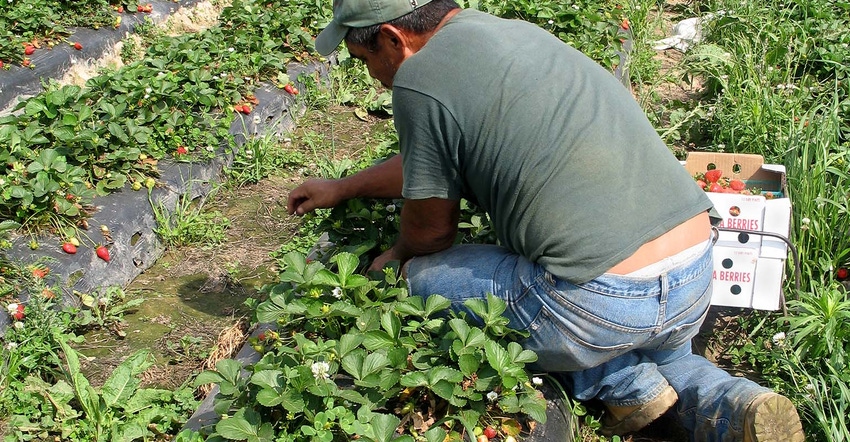August 29, 2018

A new study from CoBank’s Knowledge Exchange Division finds labor scarcity and wage inflation threatens the rural economy and puts additional stress on profitability of the agricultural industry. Manual laborers are chasing higher wages offered in industries like transportation, construction, hospitality and mining.
“Wages have historically been higher in these other industries compared to most farm labor,” said Ben Laine, a senior economist with CoBank. “The difference now is that these jobs are much more widely available and are more in line with the background of workers coming from Mexico.”
The scarcity of farm labor is also exacerbated by the shrinking number of migrant workers from Mexico. In addition to immigration controls like tightening borders and increased immigration enforcement, birthrates in Mexico are falling and populations are moving toward urban areas, leaving fewer people with agricultural backgrounds who would be interested in U.S. farm work.
The CoBank study, “Help Wanted,” is broken into two sections, “Wage Inflation and Worker Scarcity,” and “U.S. Agribusiness Experience Hiring Headaches.”
The study explains how inflated wages result from scarce labor conditions and features direct accounts from a wide cross section of agricultural operations detailing the workforce challenges they are currently experiencing. Included are accounts from a poultry processer in North Carolina, a pork producer from Minnesota, a feedyard owner in Texas, custom harvesting operations in Florida and California and dairy producers in New York and Washington.
“Labor accounts for a significant share of overall operational costs for many types of farms, particularly specialty crops and dairies,” said Laine. “In 2016, labor costs on all farms made up about 10% of gross income while in the specialty crop sector, that share was closer to 27%.”
Without a clear solution to the labor shortage in sight, these challenges are likely to persist in the years ahead. “Ultimately, the risk to the agriculture sector or any domestic industry is that wages will increase to the point where it becomes more cost effective for the U.S. to import commodities rather than import the labor to produce them domestically,” said Laine.
Source: CoBank
You May Also Like




